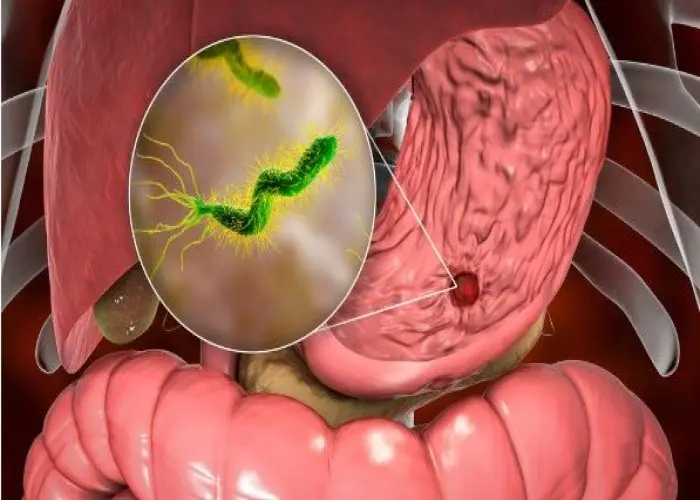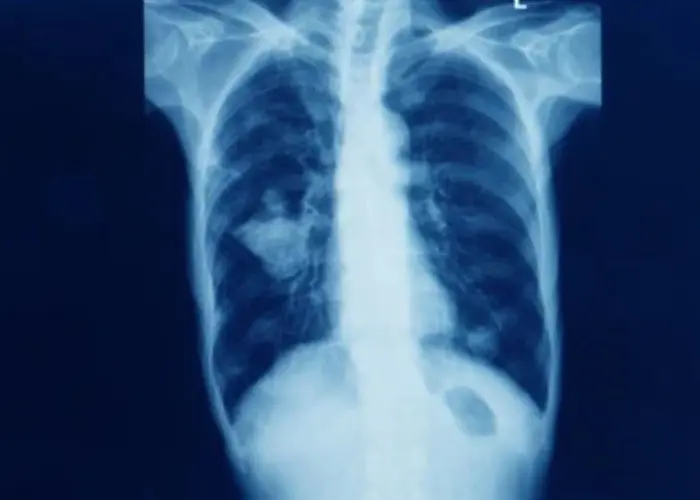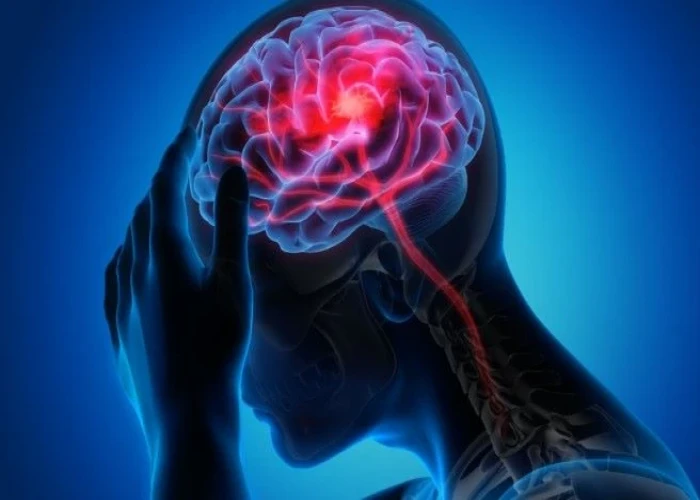 Welcome
Welcome
“May all be happy, may all be healed, may all be at peace and may no one ever suffer."
Migraine

Migraine is a common neurological disorder characterized by recurrent, throbbing headaches that can last from a few hours to several days. It is estimated that about 12% of the population experiences migraines, with women being affected more frequently than men.
Migraines are typically classified into two main types: migraine with aura and migraine without aura. Migraine with aura involves a range of neurological symptoms that occur before or during the headache, such as visual disturbances, sensory changes, or difficulty speaking. Migraine without aura does not involve these neurological symptoms.
The exact cause of migraines is not fully understood, but it is believed to be related to a complex interplay of genetic, environmental, and lifestyle factors. Triggers that can provoke migraines include stress, lack of sleep, changes in weather or barometric pressure, certain foods or drinks, hormonal changes, and certain medications.
Symptoms of migraines may include a severe headache on one or both sides of the head, nausea and vomiting, sensitivity to light and sound, and difficulty concentrating or performing daily activities. Treatment for migraines typically involves a combination of medication and lifestyle changes. Medications may include pain relievers, such as aspirin or ibuprofen, triptans, which specifically target migraines, and preventative medications, such as beta blockers or antidepressants. Lifestyle changes may include getting adequate sleep, managing stress, avoiding trigger foods, and engaging in regular exercise.
Migraines can be a chronic and debilitating condition, but with appropriate treatment and self-care, many people are able to manage their symptoms and prevent future migraines. If you are experiencing symptoms of migraines, it is important to see a healthcare professional for an accurate diagnosis and appropriate treatment.
Research Papers
Disease Signs and Symptoms
- Constipation
- Blind spots (scotomas), which are sometimes outlined by simple geometric designs
- Sensitivity to light, sound, and sometimes smell and touch
- Weakness or numbness in the face or one side of the body
- Nausea or vomiting
- Sensitivity to light (Photophobia)
- Difficulty speaking
- Weakness
- Blurred vision of eye
- Frequent urination
- Rapid mood chang
- Migraine
Disease Causes
Migraine
Though migraine causes aren't fully understood, genetics and environmental factors appear to play a role.
Changes in the brainstem and its interactions with the trigeminal nerve, a major pain pathway, might be involved. So might imbalances in brain chemicals — including serotonin, which helps regulate pain in your nervous system.
Researchers are studying the role of serotonin in migraines. Other neurotransmitters play a role in the pain of migraine, including calcitonin gene-related peptide (CGRP).
Migraine triggers
There are a number of migraine triggers, including:
- Hormonal changes in women. Fluctuations in estrogen, such as before or during menstrual periods, pregnancy and menopause, seem to trigger headaches in many women.
- Hormonal medications, such as oral contraceptives, also can worsen migraines. Some women, however, find that their migraines occur less often when taking these medications.
- Drinks. These include alcohol, especially wine, and too much caffeine, such as coffee.
- Stress. Stress at work or home can cause migraines.
- Sensory stimuli. Bright or flashing lights can induce migraines, as can loud sounds. Strong smells — such as perfume, paint thinner, secondhand smoke and others — trigger migraines in some people.
- Sleep changes. Missing sleep or getting too much sleep can trigger migraines in some people.
- Physical factors. Intense physical exertion, including sexual activity, might provoke migraines.
- Weather changes. A change of weather or barometric pressure can prompt a migraine.
- Medications. Oral contraceptives and vasodilators, such as nitroglycerin, can aggravate migraines.
- Foods. Aged cheeses and salty and processed foods might trigger migraines. So might skipping meals.
- Food additives. These include the sweetener aspartame and the preservative monosodium glutamate (MSG), found in many foods.
Disease Prevents
Disease Treatments
Migraine treatment is aimed at stopping symptoms and preventing future attacks.
Many medications have been designed to treat migraines. Medications used to combat migraines fall into two broad categories:
- Pain-relieving medications. Also known as acute or abortive treatment, these types of drugs are taken during migraine attacks and are designed to stop symptoms.
- Preventive medications. These types of drugs are taken regularly, often daily, to reduce the severity or frequency of migraines.
Your treatment choices depend on the frequency and severity of your headaches, whether you have nausea and vomiting with your headaches, how disabling your headaches are, and other medical conditions you have.
Medications for relief
Medications used to relieve migraine pain work best when taken at the first sign of an oncoming migraine — as soon as signs and symptoms of a migraine begin. Medications that can be used to treat it include:
- Pain relievers. These over-the-counter or prescription pain relievers include aspirin or ibuprofen (Advil, Motrin IB, others). When taken too long, these might cause medication-overuse headaches, and possibly ulcers and bleeding in the gastrointestinal tract.
- Migraine relief medications that combine caffeine, aspirin and acetaminophen (Excedrin Migraine) may be helpful, but usually only against mild migraine pain.
- Triptans. Prescription drugs such as sumatriptan (Imitrex, Tosymra) and rizatriptan (Maxalt, Maxalt-MLT) are used to treat migraine because they block pain pathways in the brain. Taken as pills, shots or nasal sprays, they can relieve many symptoms of migraine. They might not be safe for those at risk of a stroke or heart attack.
- Dihydroergotamine (D.H.E. 45, Migranal). Available as a nasal spray or injection, this drug is most effective when taken shortly after the start of migraine symptoms for migraines that tend to last longer than 24 hours. Side effects can include worsening of migraine-related vomiting and nausea.
- People with coronary artery disease, high blood pressure, or kidney or liver disease should avoid dihydroergotamine.
- Lasmiditan (Reyvow). This newer oral tablet is approved for the treatment of migraine with or without aura. In drug trials, lasmiditan significantly improved headache pain. Lasmiditan can have a sedative effect and cause dizziness, so people taking it are advised not to drive or operate machinery for at least eight hours.
- Ubrogepant (Ubrelvy). This oral calcitonin gene-related peptide receptor antagonist is approved for the treatment of acute migraine with or without aura in adults. It's the first drug of this type approved for migraine treatment. In drug trials, ubrogepant was more effective than placebo in relieving pain and other migraine symptoms such as nausea and sensitivity to light and sound two hours after taking it. Common side effects include dry mouth, nausea and excessive sleepiness. Ubrogepant should not be taken with strong CYP3A4 inhibitor drugs.
- CGRP antagonists. Ubrogepant (Ubrelvy) and rimegepant (Nurtec ODT) are oral CGRP antagonists recently approved for the treatment of acute migraine with or without aura in adults. In drug trials, drugs from this class were more effective than placebo in relieving pain and other migraine symptoms such as nausea and sensitivity to light and sound two hours after taking it. Common side effects include dry mouth, nausea and excessive sleepiness. Ubrogepant and rimegepant should not be taken with strong CYP3A4 inhibitor drugs.
- Opioid medications. For people who can't take other migraine medications, narcotic opioid medications might help. Because they can be highly addictive, these are usually used only if no other treatments are effective.
- Anti-nausea drugs. These can help if your migraine with aura is accompanied by nausea and vomiting. Anti-nausea drugs include chlorpromazine, metoclopramide (Reglan) or prochlorperazine (Compro). These are usually taken with pain medications.
Some of these medications are not safe to take during pregnancy. If you're pregnant or trying to get pregnant, don't use any of these medications without first talking with your doctor.
Disease Diagnoses
Disease Allopathic Generics
-
Amitriptyline Hydrochloride
If the patient has depression or if the patient has a recurrence of the pain, Amitriptyline is prescribed. 25mg to 100mg at night.
-
Flupentixol
1 pill in the morning and 1 pill at night.
-
Vitamin B complex
For weakness of the patient.
1 2 times a day after meals.
-
Pizotifen
Medicines containing pizotifen are used in vascular headache or migraine, classical migraine, common migraine and cluster headache.
Initially 0.5 daily and then 0.5 3 times a day or later.
-
Prochlorperazine Maleate
1/2 pill with sudden attack then 1 pill 3 times a day.
-
Metoclopramide Hydrochloride
1 pill 3 times a day 5 minutes before meals.
-
Cinnarizine
1 pill 3 times a day for 15 days for migraine or migraine headache.
-
Propranolol Hydrochloride
The initial dose is 10 mg 3/4 times a day and after 2 weeks the dose can be increased to 20 mg 2/3 times a day and up to 40 mg at night.
Disease Ayurvedic Generics
Disease Homeopathic Generics
Disease yoga
Migraine and Learn More about Diseases

Penicillin allergy

Esthesioneuroblastoma

Duodenal Ulcer

Hyperhidrosis

Von Willebrand disease

Carcinoma of unknown primary

Malignant hyperthermia

Familial Mediterranean fever
Migraine, শিরপীড়া
To be happy, beautiful, healthy, wealthy, hale and long-lived stay with DM3S.
